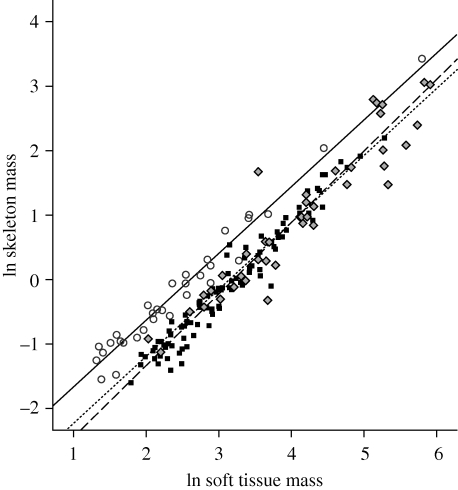Figure 1.
Regression of ln skeletal mass against ln soft tissue mass (= total body mass − skeletal mass) in passerine birds (n = 96; black squares, solid line), rodents (n = 39; grey diamonds, dashed line) and bats (n = 34; white circles, dotted line). Raw data is in the electronic supplementary material. To the mass of the mammal skeletons, 15 per cent was added to account for the fact that mammal bones are not pneumatized but contain marrow (Currey & Alexander 1985). Regression slopes do not differ significantly (p = 0.30). Comparison of skeletal mass using analysis of covariance demonstrate that the mass of bird skeletons is indistinguishable from that of rodents (p = 0.18). In contrast, bat skeletons are significantly heavier (p < 0.001) and thus comprise a larger proportion of total body mass. The 95 per cent confidence intervals for slopes of the rodent and bat regressions encompassed 1.0 (i.e. isometry; CIbats = 0.95–1.12; CIrodents = 0.91–1.16); the 95 per cent confidence interval for the bird regression indicated slight positive allometry (CIbirds = 1.06–1.16).

